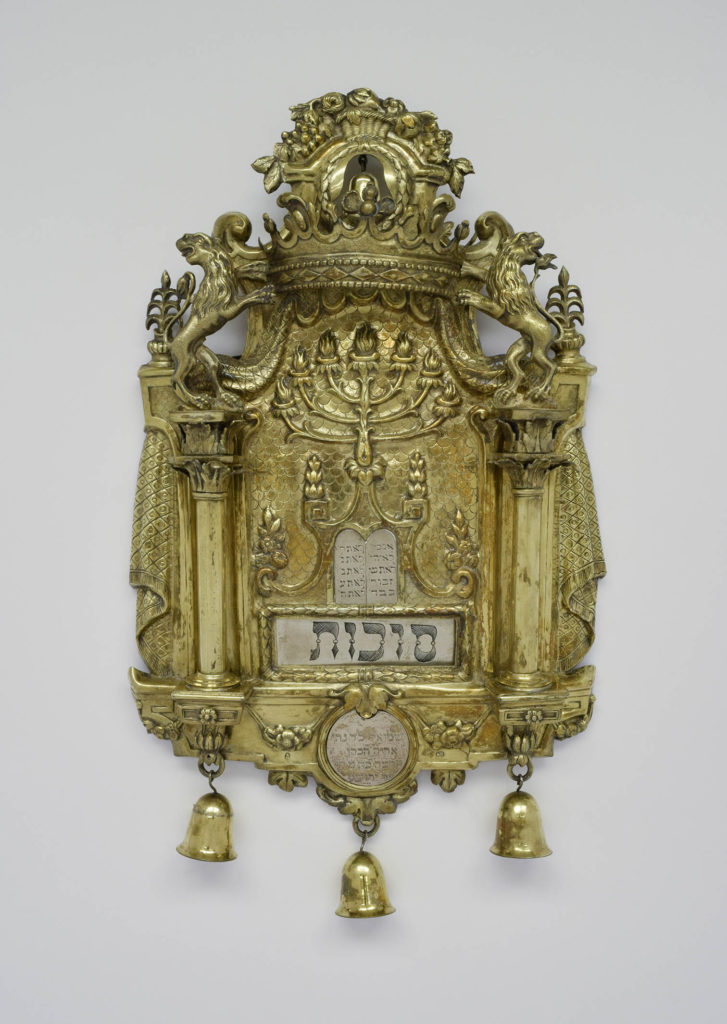Torah Shield
Maker: Franz Anton Gutwein (ca. 1729-1805)
Augsburg, Germany, 1801
Cast, repoussé, parcel-gilt and engraved silver, h. 18 ¼ x w. 10 1/8 x d. 2 3/8 in.
Inscription: “Samuel s[on of]…Nathan Arieh HaCohen…Tirzah daughter of…Joshua”
B’nai B’rith Klutznick National Jewish Museum Collection, gift of Joseph B. and Olyn Horwitz, 2015.17.147
The first known Torah shield or breastplate was dedicated in Amsterdam in 1612 and was Ashkenazic (Eastern European) in origin. In the Ashkenazi tradition—as well as in Italy and Turkey—breastplates or metal shields traditionally hung covering the front of the Torah mantle. In Italy the breastplate or keter, was shaped like a crown, suggesting the crown of the Law, while in Turkey the breastplate or tas or ziz was constructed in different shapes like an oval, circle, or a Star of David. The breastplate is unique to its community; however, it is usually constructed of silver-plate, metal or silver. The breastplate’s function is not simply an adornment for the Torah that recalls the decoration of the robes of the high priests in the ancient Temple in Jerusalem. Rather, it earmarks which Torah scroll should be used for which Torah reading on any particular Sabbath or holiday. Breastplates from the seventeenth century, in particular from Germany and Holland, were rectangular or square in form. Later breastplates were round and very decorative; some had bells recalling those on the bottom of the robes of the high priests, and small dedication plaques that hung from the lower edge of the breastplate.
This particular breastplate reflects the neo-classical style. Two columns surmounted by lions of Judah support a crown. The central field is covered with an engraved fish-scale pattern and contains the holy day plaque for Sukkot, the Feast of Tabernacles. This plaque indicates that the Torah scroll wearing this breastplate is rolled to the portion for the Sukkot festival. Also in the central field are the Ten Commandments and a menorah (seven-branched candelabrum) and a roundel with the names of the donors.
Publications:
In the Spirit of Tradition: The B’nai B’rith Klutznick Museum, ed. Linda Altshuler, 1988, p. 82, no. 112, ill. p. 53.
Breger, Jennifer, “Judische Museen in Washington DC, Shalom: le Magazine Juif International de Geneve, March, 1989, p. 46.

